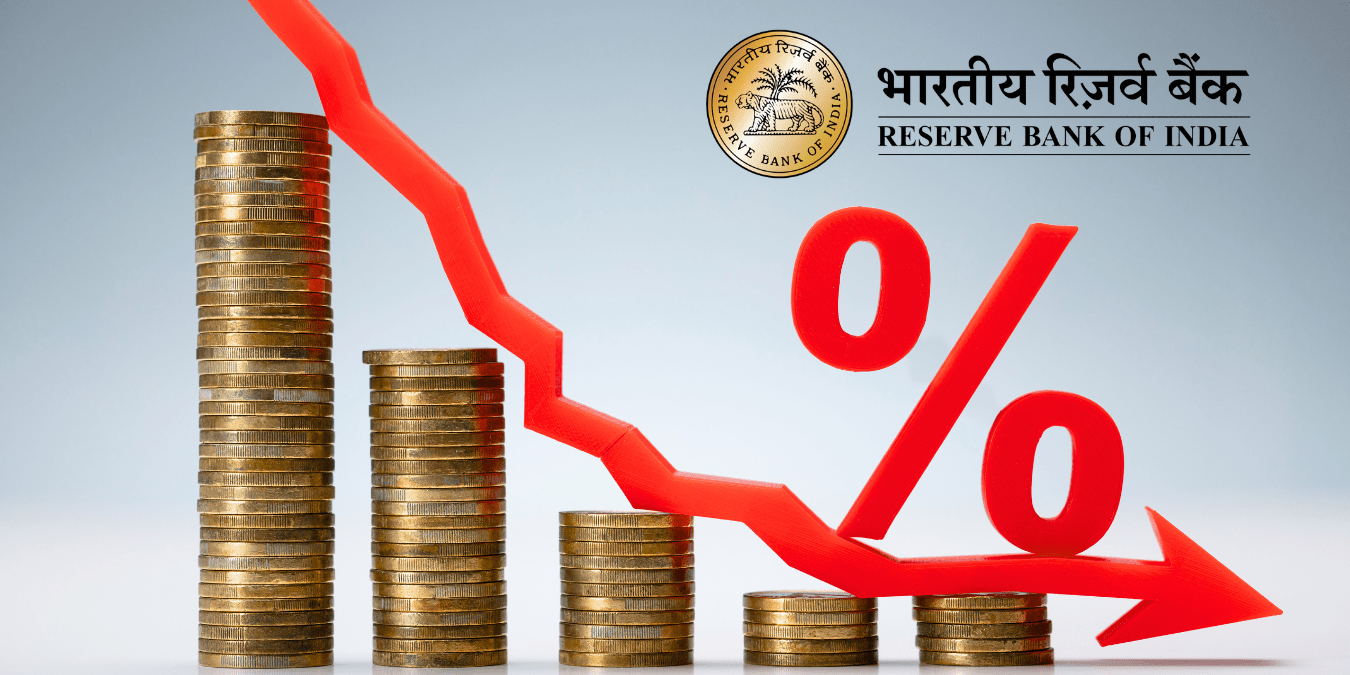
” How RBI’s new domains, Bank.in and Fin.in, aim to curb cyber fraud and enhance online banking security in India. Learn about their benefits, challenges, and impact on the digital economy. Stay informed about RBI’s latest cybersecurity initiatives for a safer financial future. “
In a groundbreaking move to enhance cybersecurity and protect consumers from online financial fraud, the Reserve Bank of India (RBI) has announced the introduction of new domain names—Bank.in and Fin.in. These domains are designed to provide a secure and trustworthy platform for banking and financial services, reducing the risk of phishing, spoofing, and other cybercrimes. This initiative is part of the RBI’s broader strategy to safeguard the digital economy and ensure the integrity of online financial transactions.
In this blog post, we’ll explore the significance of this announcement, the potential impact on the banking and financial sectors, and how these new domains can help curb cyber fraud. We’ll also discuss the technical aspects, benefits, and challenges associated with the implementation of Bank.in and Fin.in.
Introduction to RBI’s New Domains: Bank.in and Fin.in
The Reserve Bank of India (RBI) has always been at the forefront of implementing measures to protect the financial ecosystem. With the rapid digitization of banking and financial services, the risk of cyber fraud has increased exponentially. To address this, the RBI has introduced two new domain names: Bank.in and Fin.in.
These domains are exclusively reserved for regulated entities such as banks, non-banking financial companies (NBFCs), and other financial institutions. By creating a dedicated and secure namespace, the RBI aims to make it easier for consumers to identify legitimate websites and reduce the risk of falling victim to fraudulent activities.
The Rising Threat of Cyber Fraud in India
India has witnessed a significant surge in cyber fraud cases in recent years. According to the Indian Cyber Crime Coordination Centre (I4C), there was a 500% increase in cybercrime complaints between 2018 and 2023. Financial frauds, including phishing, identity theft, and online scams, account for a substantial portion of these complaints.
Key Statistics:
- Phishing Attacks: Over 50% of cyber fraud cases in India involve phishing, where attackers impersonate legitimate banks or financial institutions to steal sensitive information.
- Financial Losses: In 2022 alone, financial frauds resulted in losses exceeding ₹10,000 crore.
- Digital Transactions: With over 8 billion digital transactions per month, India’s digital economy is a prime target for cybercriminals.
The introduction of Bank.in and Fin.in is a proactive step to address these challenges and create a safer digital environment for consumers.
How Bank.in and Fin.in Will Enhance Cybersecurity
The primary objective of the new domains is to provide a secure and easily identifiable platform for banking and financial services. Here’s how they will help curb cyber fraud:
a. Improved Trust and Authenticity
By reserving Bank.in and Fin.in exclusively for regulated entities, the RBI ensures that only legitimate organizations can use these domains. This makes it easier for consumers to distinguish between genuine websites and fraudulent ones.
b. Reduced Phishing and Spoofing
Phishing attacks often rely on deceptive domain names that mimic legitimate websites. With the new domains, the RBI aims to eliminate this risk by creating a standardized and secure namespace.
c. Enhanced Consumer Awareness
The RBI plans to launch awareness campaigns to educate consumers about the new domains. This will empower users to verify the authenticity of websites before sharing sensitive information.
d. Streamlined Regulation
The centralized control over Bank.in and Fin.in will enable the RBI to monitor and regulate online financial services more effectively, ensuring compliance with cybersecurity standards.
Technical Aspects of the New Domains
Implementing Bank.in and Fin.in involves several technical considerations:
a. Domain Registration and Verification
Only RBI-regulated entities will be eligible to register under these domains. A stringent verification process will be put in place to ensure that only legitimate organizations can use them.
b. SSL Certificates and Encryption
All websites under Bank.in and Fin.in will be required to use SSL certificates and implement robust encryption protocols to secure data transmission.
c. DNS Security
The RBI will collaborate with domain registrars and cybersecurity experts to enhance DNS security, preventing domain hijacking and other attacks.
d. Integration with Existing Systems
Banks and financial institutions will need to integrate the new domains with their existing IT infrastructure, ensuring a seamless transition for consumers.
Benefits for Banks, Financial Institutions, and Consumers
The introduction of Bank.in and Fin.in offers numerous benefits for all stakeholders:
a. For Banks and Financial Institutions
- Enhanced brand credibility and trust.
- Reduced risk of reputational damage due to cyber fraud.
- Streamlined compliance with RBI regulations.
b. For Consumers
- Greater confidence in online transactions.
- Easier identification of legitimate websites.
- Reduced risk of financial losses due to fraud.
c. For the RBI
- Improved oversight of the digital financial ecosystem.
- Enhanced ability to combat cybercrime.
- Strengthened consumer protection mechanisms.
Challenges in Implementing the New Domains
While the new domains offer significant advantages, their implementation is not without challenges:
a. Transition Costs
Banks and financial institutions may incur substantial costs to migrate to the new domains and update their IT systems.
b. Consumer Awareness
Educating millions of consumers about the new domains and their benefits will require extensive awareness campaigns.
c. Cybersecurity Threats
Cybercriminals may attempt to exploit the transition period to launch new attacks.
d. Global Compatibility
Ensuring that the new domains are recognized and trusted internationally will be crucial for India’s global financial integration.
Global Precedents and Lessons Learned
India is not the first country to introduce dedicated domains for financial services. Countries like the UK (.bank) and the US (.insurance) have implemented similar measures with positive results. These initiatives have significantly reduced phishing attacks and enhanced consumer trust.
Key Takeaways:
- Centralized Control: Effective regulation and oversight are critical to the success of dedicated domains.
- Consumer Education: Awareness campaigns play a vital role in ensuring widespread adoption.
- Collaboration: Partnerships between regulators, financial institutions, and cybersecurity experts are essential for seamless implementation.
Steps to Transition to Bank.in and Fin.in
The transition to the new domains will involve several steps:
- Domain Registration: Banks and financial institutions must register under Bank.in or Fin.in.
- System Updates: IT systems and digital platforms will need to be updated to reflect the new domains.
- Consumer Communication: Institutions must inform their customers about the change and provide guidance on verifying website authenticity.
- Monitoring and Compliance: The RBI will monitor compliance and address any issues that arise during the transition.
The Future of Secure Online Banking in India
The introduction of Bank.in and Fin.in marks a significant milestone in India’s journey toward a secure digital economy. As the adoption of these domains grows, we can expect:
- Reduced Cyber Fraud: A significant decline in phishing and spoofing attacks.
- Increased Consumer Confidence: Greater trust in online financial services.
- Enhanced Global Reputation: India’s position as a leader in digital innovation and cybersecurity will be strengthened.
The RBI’s announcement of Bank.in and Fin.in is a game-changer for India’s digital financial ecosystem. By creating a secure and standardized namespace for banking and financial services, the RBI is taking a proactive step to curb cyber fraud and protect consumers. While challenges remain, the potential benefits far outweigh the costs, paving the way for a safer and more trustworthy digital economy.
As we move forward, collaboration between regulators, financial institutions, and consumers will be key to the success of this initiative. Together, we can build a secure and resilient financial ecosystem that empowers millions of Indians to embrace the digital future with confidence.
-
The 8.10% Home Loan: Why PNB’s Rate Cut is Both a Blessing and a ‘Goldilocks’ Trap for Indian Buyers in 2025
The 8.10% rate cut looks like a gift, but PNB’s new “Goldilocks” clause hides a mathematical trap for
-
The 0.25% Illusion: Why the Latest Rate Cuts by Bank of India, Indian Bank & Bank of Baroda Hide a Bigger Opportunity for You
Your lower home loan rate might be an illusion. While headlines cheer the RBI cut, a hidden “Reset
-
The RBI 25 bps Rate Cut: Why Your Wallet and the Economy is About to Feel Different
The 5.25% rate cut hides a shocking secret: money is actually tighter than before. While home loans drop,





























